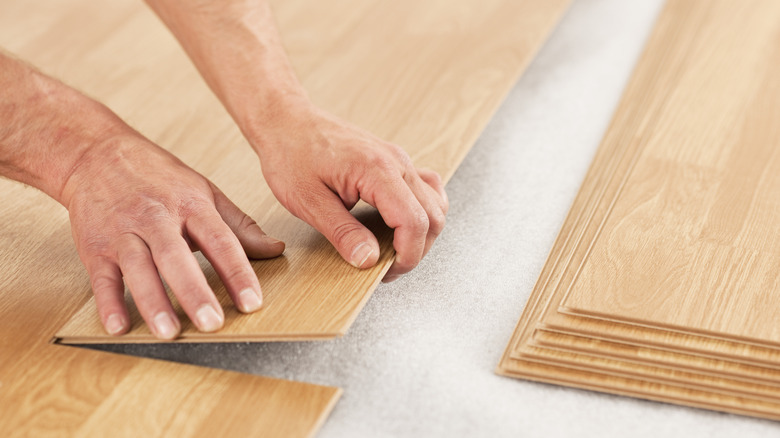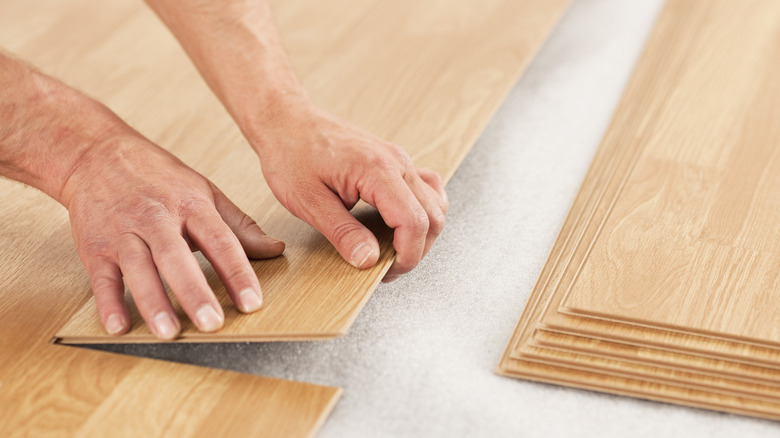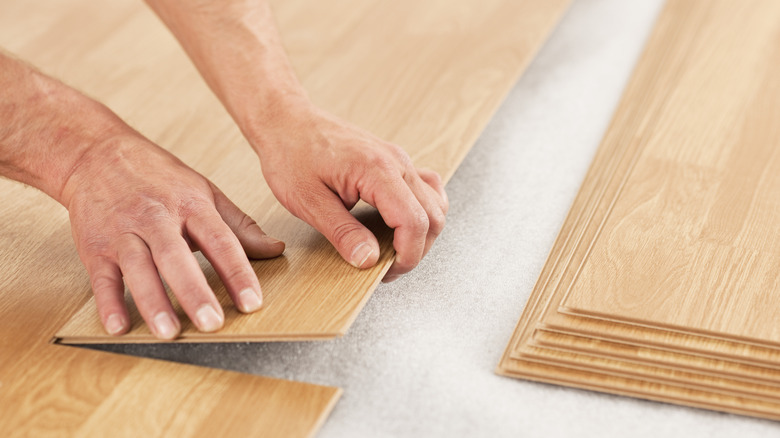It can be frustrating to see your beautiful laminate flooring start to lift and come apart at the seams. After spending money to install laminate flooring, you expect it to last for many years. So, what causes laminate flooring to lift and how can you fix it?
Causes of Peaking Laminate Flooring
There are a few common causes of peaking or curling laminate flooring:
· Moisture
The most common culprit for lifting laminate flooring is exposure to water or moisture. Laminate flooring, like hardwood, is sensitive to moisture and humidity changes. Excess moisture that gets underneath the flooring can cause the planks to swell, peak at the seams, or lift completely. Sources of water can include floods, leaks, pets, excess humidity, and more.
· Improper Installation
If laminate flooring isn't properly installed, it may become more susceptible to moisture issues and start to lift or separate at the seams. Proper installation includes using the correct underlayment, leaving proper expansion space around the edges, and fully locking the planks tightly together. If the flooring wasn't installed correctly, the peaking problem will only get worse over time.
Types of Laminate Floor Lifting
· Peaking
When the long edges of the laminate flooring planks start to peak or curl up, this is called peaking. It leaves uneven ridges along the seams which lift up above the rest of the floor. Peaking is commonly caused by excess moisture getting underneath the flooring. As the planks swell and expand, they lift up and peak at the seams.
· Cupping
Cupping is when certain areas of the floor (rather than just the seams) rise up slightly higher than the surrounding flooring. This gives a wavy, uneven appearance to the floor. Cupping can be caused by water spills or leaks that weren't immediately wiped up.
· Lifting
In more severe cases, the entire sections of the floor can actually lift up partially or completely from the subfloor. Often you might be able to see gaps between the laminate floor and subfloor, allowing moisture to get trapped underneath. Lifting is a sign of major moisture damage or very improper installation.
Tips to Prevent and Fix Lifting Laminate Floors
If your laminate flooring has started lifting, peaking, or cupping, it's important to act quickly to fix it and prevent further damage. Try these tips:
- Remove Moisture Promptly
Wipe up any spills, leaks, or pet accidents immediately. Do not allow water to seep underneath the flooring, as this will severely damage the planks. Improve humidity levels and moisture control in the home.
- Reattach Loose Planks
Apply flooring glue under peeled back corners and along lifted seams. Place weights on top to hold planks down securely overnight until the glue sets.
- Replace Damaged Sections
Planks that are completely lifted will need to be fully replaced. Start by removing any sealant strips around edges or doorways and detaching the baseboards/trim. Pull up only the damaged section(s) of flooring and leave the rest in place. Install new, matching replacement planks.
- Consider Underlayment
Upgrading to a high-quality, moisture resistant underlayment before installing replacement planks can help prevent the issue in the future.
- Improve Subfloor
If there was a moisture problem or leak in the actual subfloor below the laminate, this will need to be fixed and dried out before new flooring is installed. Applying moisture barrier paints can also help.
- Allow Proper Expansion
Make sure there is adequate room for the flooring to expand and contract around the perimeter and transitions between rooms. Lacking this expansion gap can cause buckling and lifting. Don’t push planks completely flush to walls or door frames.
- Reinstall the Floor Properly
In extreme cases where the majority of the floor is damaged, the best option is to replace the entire floor. Make sure to install all new flooring correctly, locking planks tightly, adding underlayment, allowing expansion room, and following the manufacturer’s directions. Rushed or improper installation is often the root cause of laminate floors peaking or lifting later on.
Final Words
By identifying and addressing what is causing your laminate flooring to lift or peak, you can make the necessary repairs to get your floors looking great again. Deal with water damage issues promptly, reattach or replace loose planks, upgrade underlayment, and improve the subfloor to prevent ongoing problems with lifting and cracks in your laminate flooring.




